Unseen Artwork of Violeta Parra Revealed in Chile
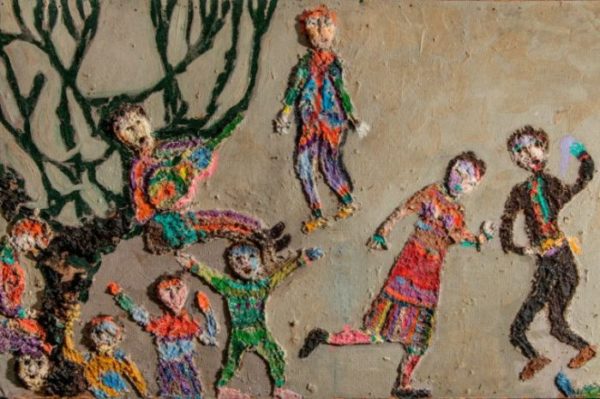
HAVANA TIMES – On March 16, the Cultural Extension Center of Chile’s Catholic University (UC) unveiled for the first time ever the paper maché creations Violeta Parra created in the last years of her life. The artwork, which had been lost in Geneva for many years, will remain on display until April 27. Together with the paper maché montages, the exhibit includes some hitherto unknown excerpts from the folklorist’s poetry notebook, which her family had held onto for many years.
These works could have been lost forever and never known. A postcard changed everything – one that said simply: “Isabel, I have your mother’s canvases, Daniel Vittet.” That card was written in 1974, at a time when Isabel Parra, Violeta’s oldest daughter, was exiled in Europe together with her daughter Milena Rojas. Isabel, a musician, was giving a concert with her brother Angel Parra, and at the close of that event, the mysterious postcard was waiting in her dressing room. She knew that the canvases it referred to had to be the paper maché creations Violeta had made in Geneva between 1964 and 1965. That handiwork marked the final phase of Violeta Parra’s visual art production. The artist, tragically, had taken her own life in 1967.
After recovering the canvases, Violeta’s exiled descendants kept them safe. Much later, in the 90s when the family returned to Chile, they had them restored. However, until now, they’d never been shown to the public in a gallery.
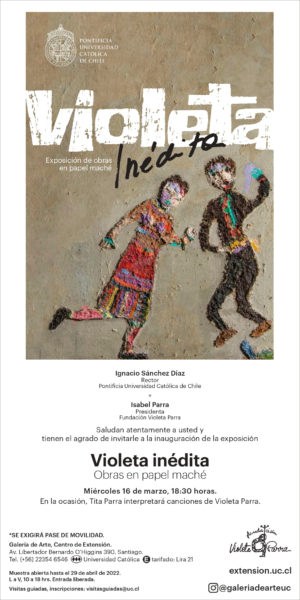
“These paper maché works weren’t exhibited in the Louvre Museum, because they came later. Between 1964 and 1965, Violeta was living in her combined home and studio in Geneva, and that’s where she created these works. Unfortunately, when she returned to Santiago in 1965, she left the paper maché creations in her studio. I think people are going to be surprised with what they see in “Violeta Unseen”, because this exhibit reveals a new side to her work. It’s a mysterious facet – these paper maché creations reflect herself and what she was thinking in her later years, when she was almost finished producing her body of visual art,” says Milena Rojas, Violeta’s granddaughter and the curator of the UC’s Violeta Parra collection.
Milena Rojas spent many years in exile with her mother, Isabel Parra. She was present at the concert when Daniel Vittet’s postcard informed them of the whereabouts of Violeta’s final canvases. Today, in her role as curator of the Violeta Parra Collection, she’s overseen the hanging of these previously unseen works, now in a gallery for the first time. The exhibit marks Isabel Parra’s decision as heir and president of the Violeta Parra Foundation to formally donate her mother’s works to Chile’s Catholic University.
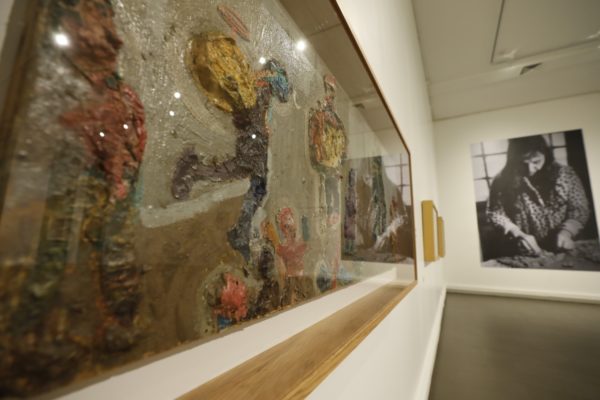
“In this exhibit, we include a poster from the small showing of Violeta Parra’s embroidered wall hangings that then UC Rector Fernando Castillo oversaw in 1968, as a posthumous homage. Isabel Parra held on to that poster, and now – restored and framed – it returns once more to the UC Extension Center, as the first piece in ‘Violeta Unseen’. The catalogue from that showing also includes an insert with an invitation to the posthumous homage. It’s all very symbolic for us, because – in a way – Violeta exhibited here in 1968, and now 54 years later she returns to the Catholic University. It embodies an academic and artistic tie that goes back many years,” Milena Rojas states. The exhibition allows the viewer to discover some of the images going through Violeta Parra’s mind in her final years of life, before she died in 1967.
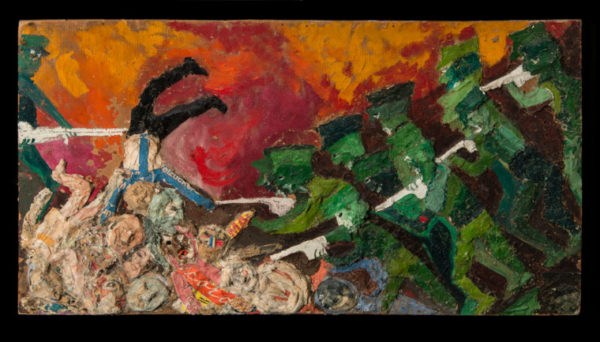
“Violeta Parra is a figure strongly linked to Chile’s identity. Her works allow us to have contact with stories she expressed through the materials she chose – simple textures full of life. Art has a marvelous property of reflecting the intimate workings of its creator, and of crystalizing collective moments. This is a first step towards reconnecting Violeta with her public and with the new generations. Violeta Parra’s work will be passed on to the UC little by little, and we’re negotiating a space to hold her legacy. That will allow us to show it, teach about it, and investigate its human and artistic essence, which is a part of Chilean identity,” says Magdalena Amenabar, assistant rector of UC’s Communications and Cultural Extension.
Violeta Parra used hot water instead of the traditional cold to form the paper maché figures. She also used raw flour and European magazines to recreate scenes from her native Chile. She painted some of the works with tempera or oil paints but left others natural.
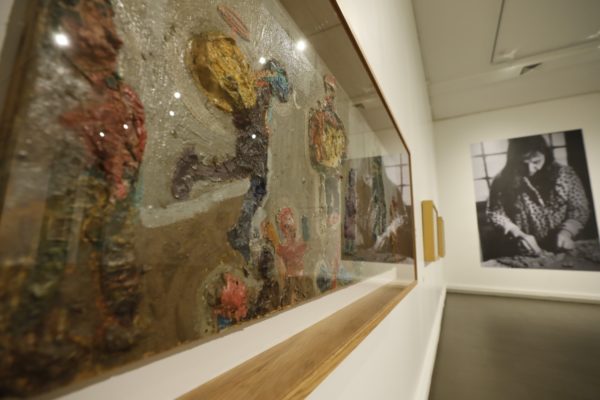
Among her canvases are images of everyday life, figures from popular culture, colorful children dancing the “Cueca”, celestial figures, and some historic events that echo in the present, such as a canvas called “Genocide” showing armed men in olive green uniforms, pointing their guns at the bodies of dead civilians, whose corpses form a blurry human pyramid.
“Besides the scenes of everyday life common in Chilean popular culture, there are themes of denunciation and of the harshest reality. These are also an important facet of Violeta Parra, and this hitherto unknown work, ‘Genocide’ is a good example. ‘Genocide’ is an image denouncing repression, expressed through paper maché figures of riflemen or soldiers, with people on the floor who’ve been beaten or were prisoners. Violeta was a visionary. Her work speaks of all those problems that still exist today. Social themes, spiritual topics, repression. Her song Me gustan los estudiantes [“I like the students”] for example, was heard frequently during the October 18, 2019, social uprising in Chile. Violeta and her work have no expiration date,” Milena Rojas observes.
Selected texts also on exhibit
Together with the unseen paper maché artwork, the display includes another element that was completely unknown to the public. Each one of the ten canvases on exhibit are paired with excerpts of Violeta’s writing that Isabel Parra and Milena Rojas selected. Some came from the dozens of autobiographies of Violeta Parra, but there’s one other that is new.
“Violeta’s notebooks of popular poetry were unknown. We included here an unpublished quartet of those poems, which are displayed beside the “Genocide” work. I believe people will be surprised and dazzled, because this is a very special exhibit, reflecting the care and affection Violeta put into her art. She used to say that the paintings represented the sad part of life, and that the textile hangings were the songs she painted. I don’t know what she’d say about her paper maché creations, but the important thing is that people can now discover for themselves these marvelous unknown works. In that way, they’ll be able to reconnect with Violeta Parra and her art.” These words summarize Milena Rojas’ view of “Violeta Unseen” and of the gaze of that monumental artist born in the south of Chile nearly 105 years ago.
The exhibition “Violeta Unseen” is open to the public Monday through Friday, 10 am to 8 pm, at the UC Extension Center located at Alameda 390, Santiago, Chile. The exhibit is free, but visitors will be required to show proof of vaccination before entering.





